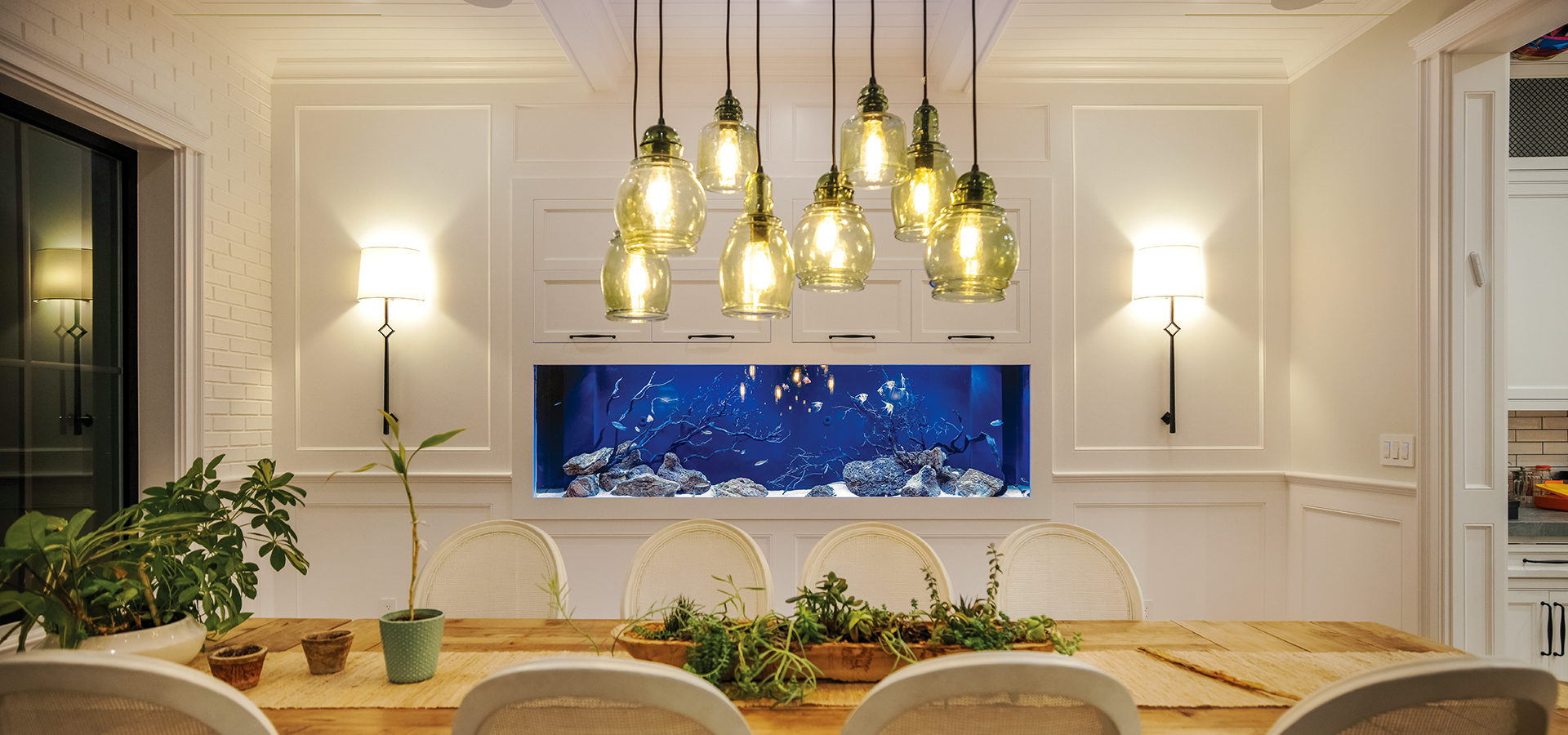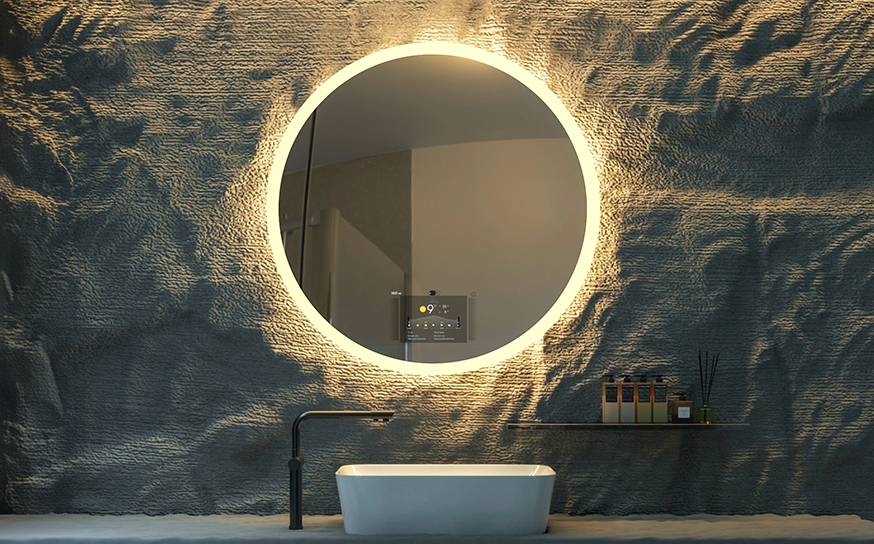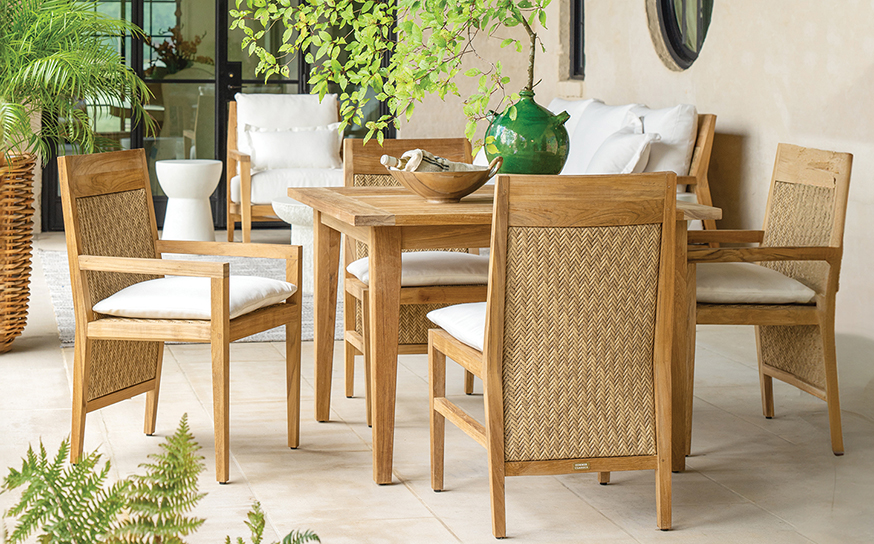Meet Some Exotic Fish Enthusiasts Who Own Luxury Home Aquariums
They are in deep.
-
CategoryHomes
-
Written byAnne M. Russell
Call it the Revenge of the Fish Nerds. Fishkeeping, long seen as a mildly geeky hobby, has evolved into the hot new thing. “Today’s hobbyist is a different hobbyist,” says veteran aquarium expert Eric Cohen of Among the Reef, an ultra-high-end online “fish concierge” service he runs with partner Jordan Yallen. “Now they’re cool, edgy extroverts.”
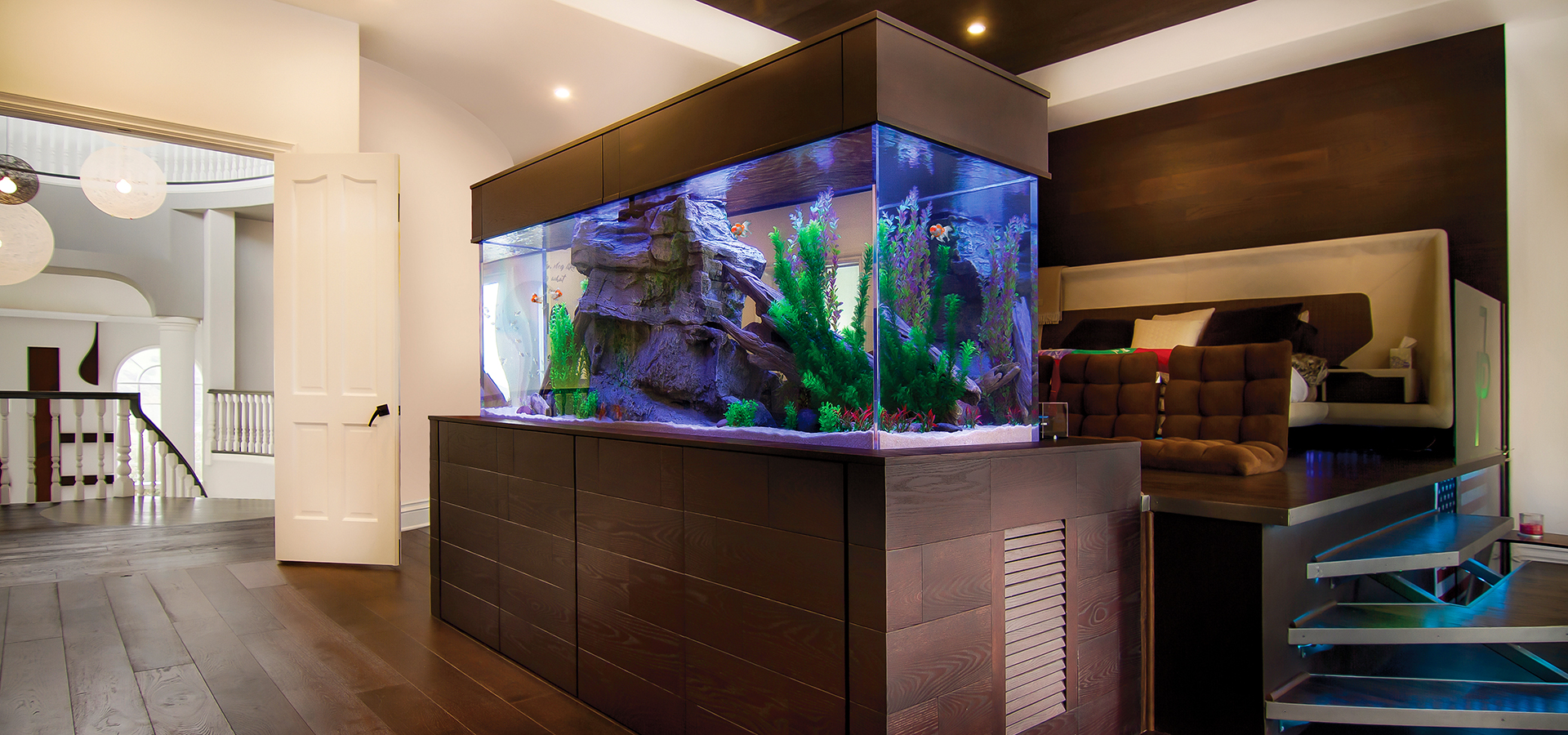
Above: A view of a 500-gallon aquarium/TV combo in Calabasas designed by Infinity Aquarium Design.
•••
Several unrelated factors converged to set off the home-aquarium explosion. First there was the pandemic. Stuck at home, Americans rediscovered a love for animal companions of all kinds—and aquarium creatures were no exception. Nic Tiemens, co-owner of the high-end tank design and maintenance company Infinity Aquarium Design, says he saw a huge increase in new installations and upgrades to existing tanks. “Between 2019 and 2021, we saw a 400% growth in revenue. We got a lot of remodels, but it was also new tanks as well,” he says.
Ken Avchen, a longtime DIY aquarist who lives in Reseda, upped his fishkeeping game during the pandemic. He added the reef tank he’d long dreamed of to his existing 110-gallon saltwater and 50-gallon freshwater collection. “Now that I’ve gotten into the corals in the reef tank,” he says, “I barely look at the saltwater tank.”
A second factor in the hobby’s explosion seems to be the democratization of once-arcane knowledge that could only be tapped by querying fish store owners. “When I was a kid,” recalls Julian Groover, co-owner of Aquarium City in Canoga Park, “you’d go into these dark, grungy stores and there’d be this gruff man at the counter. The internet has changed that.”
Now, thanks to YouTube, almost anyone can learn to be an aquarist. The video “Million Dollar Fish Tank,” for example, has over 3.4 million views and counting, while Tiemens’ “1,000 Gallon Planted Discus Aquarium” has logged 1.2 million views.
And lastly, the technology surrounding home aquariums has improved. The use of lighter-weight acrylic instead of glass for tank construction has made larger tanks possible, while innovations in lighting, water chemistry and monitoring, and animal transport and breeding have made fishkeeping easier.
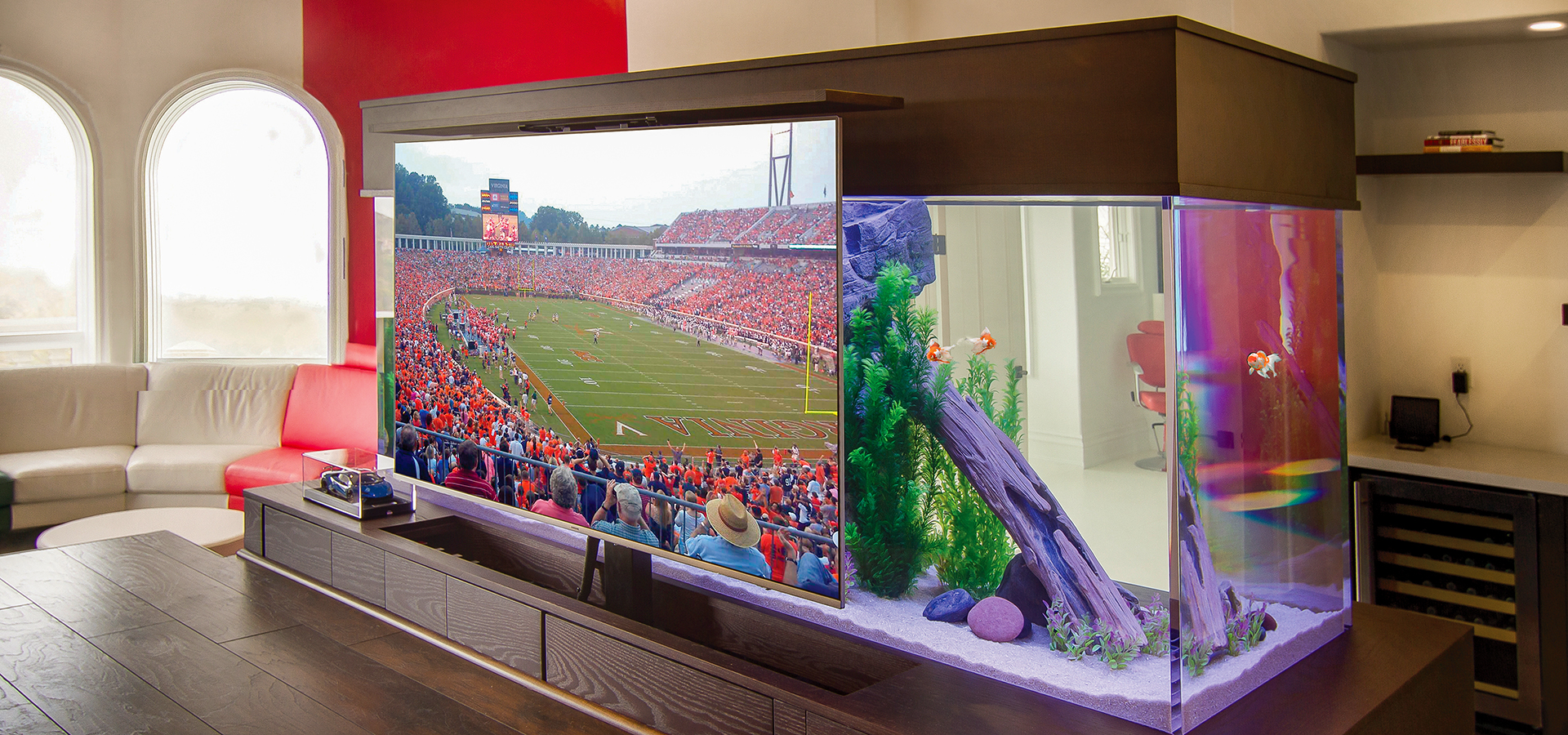
Above: The TV side of the aquarium/TV combo. The 65-inch flat screen hides custom-made cabinetry that raises and lowers with the push of a button.
•••
High-end aquarium keepers, however, rely on professionals like Tiemens, Groover, and Armand Schmide of Underwater Depot in Sherman Oaks to provide setup and ongoing weekly or monthly maintenance. All three report that the pandemic kicked the home maintenance business into high gear.
For many newbie fish enthusiasts, the long-running Animal Planet reality show Tanked was their first exposure to custom tanks. (Cancelled in 2020, the show still airs in reruns.) While there’s no question that the show spurred interest in fancy home aquariums, it also set up some unrealistic expectations.
“It takes a year to be ‘fish-ready’—to prepare the ecosystem and to build up live stock,” says Groover. “The TV version isn’t real. You can’t really do a tank in day.” A tank needs a month of conditioning and water cycling before you can add fish—carefully and a few at a time, starting with the toughest (and cheapest).
The pandemic has made the process even slower. Spot shortages in glass and acrylic make it harder to get a tank, and air transport from fish-collecting hot spots like Fiji and the Philippines has only resumed slowly. Hawaii has imposed a near total ban on fish collecting in its waters.
So as demand has grown, supply has been constrained and prices have increased.
Groover estimates that a finished reef tank with saltwater fish and corals runs about $10,000, while the maintenance—including cleaning, medical treatments, and emergency response when necessary—is $500 to $1,000 a month. Schmide, who focuses more on fancy freshwater tanks, says his crew starts at $85 a visit. Tiemens, who serves the ultra-luxury, pure custom end of the market, says his average setup is $30,000 to $50,000, with ongoing maintenance costing up to $2,500 a month. Fish are extra, but Tiemens notes that a healthy tank with a thoughtfully curated selection of compatible fish shouldn’t need frequent restocking.
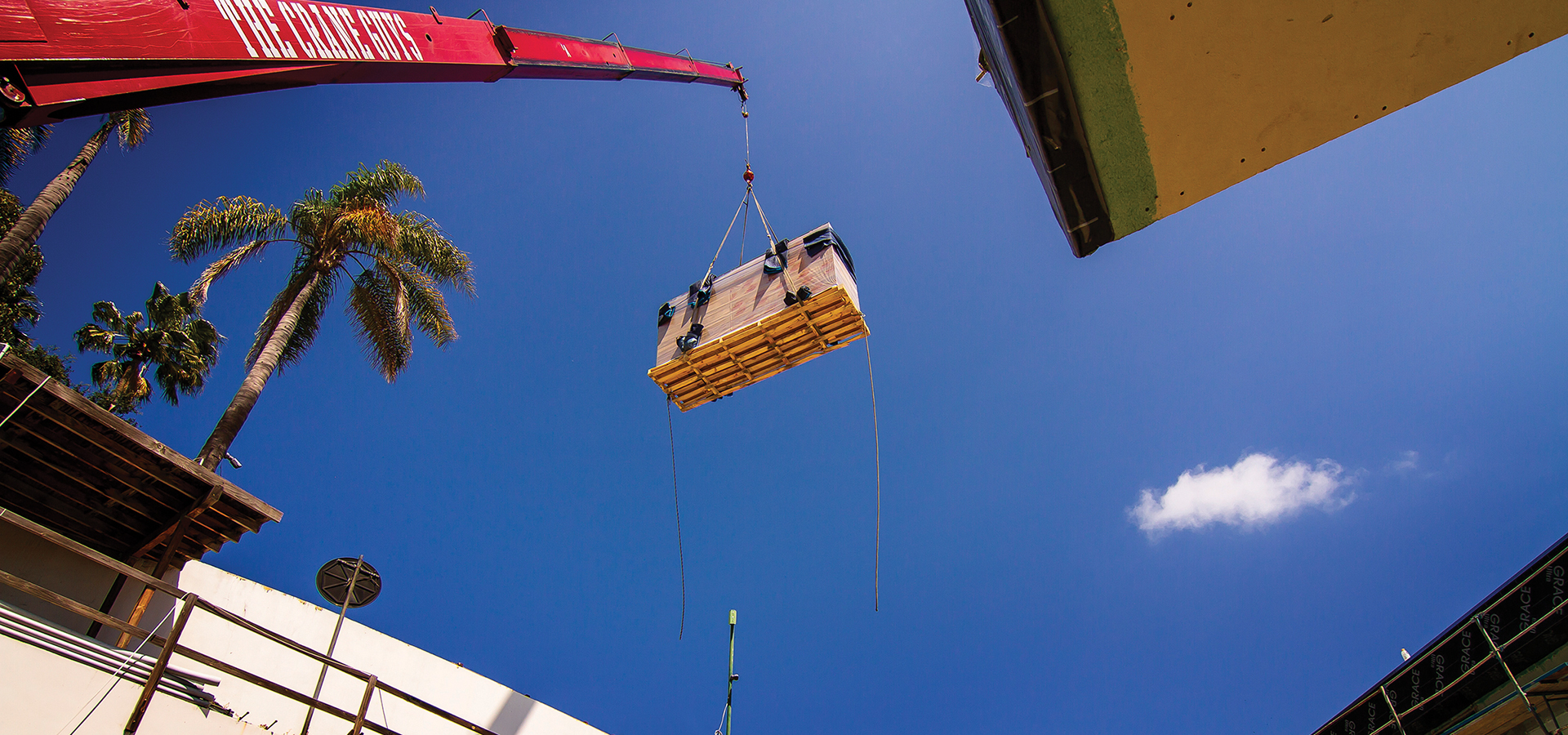
Above: “This 2,600-gallon saltwater aquarium had to be craned into the home,” says Nic Tiemens from Infinity Aquarium Design. “It was a $100 million property in Bel Air, so they wanted something really spectacular.”
•••
One aspect of the aquarium business that’s increasingly come under scrutiny is its environmental impact. To the new wave of fish enthusiasts, that matters. “This new generation of hobbyists is committed to sustainability,” Tiemens says, adding that he believes it has driven a significant change in aquarists’ buying patterns. He believes that the resurgence of interest in freshwater tanks is due in part to the greater sustainability of freshwater over saltwater. Most freshwater fish are aquacultured, while most marine fish are still collected in the wild.
There is also a heightened consciousness of the toll the aquarium trade takes on the oceans. Last year, a documentary called The Dark Hobby indicted the industry for its unsustainable collection practices, which in some non-U.S. regions include dosing reefs with cyanide to stun fish for easier collection. That practice kills the invertebrates that make up the reef itself.
Captive breeding would seem like a solution, but so far the only species reproducing with proven success in tanks are clown fish (a.k.a. “Nemo”) and blue tangs (a.k.a. “Dory”). Soft corals and small and large polyp stony corals, which through selective breeding have become reef tanks’ psychedelic superstars with names like Space Invader Pectinia and Berry Bliss Goniopora, are also relatively easy to breed at home.
In addition to serving as personal fish concierges to customers and their rare, $15,000 and $30,000 specimens, Among the Reef partners Cohen and Yallen are determined to make captive breeding a reality for more species. They’re starting their effort with the Japanese wrought-iron butterflyfish and are now completing the construction of a new breeding facility near LAX. “I’ve always been driven by the conservation side of things,” says Cohen, who is a second-generation aquarist and was a frequent guest on Tanked. “Every fish is a life; every coral is a life.”
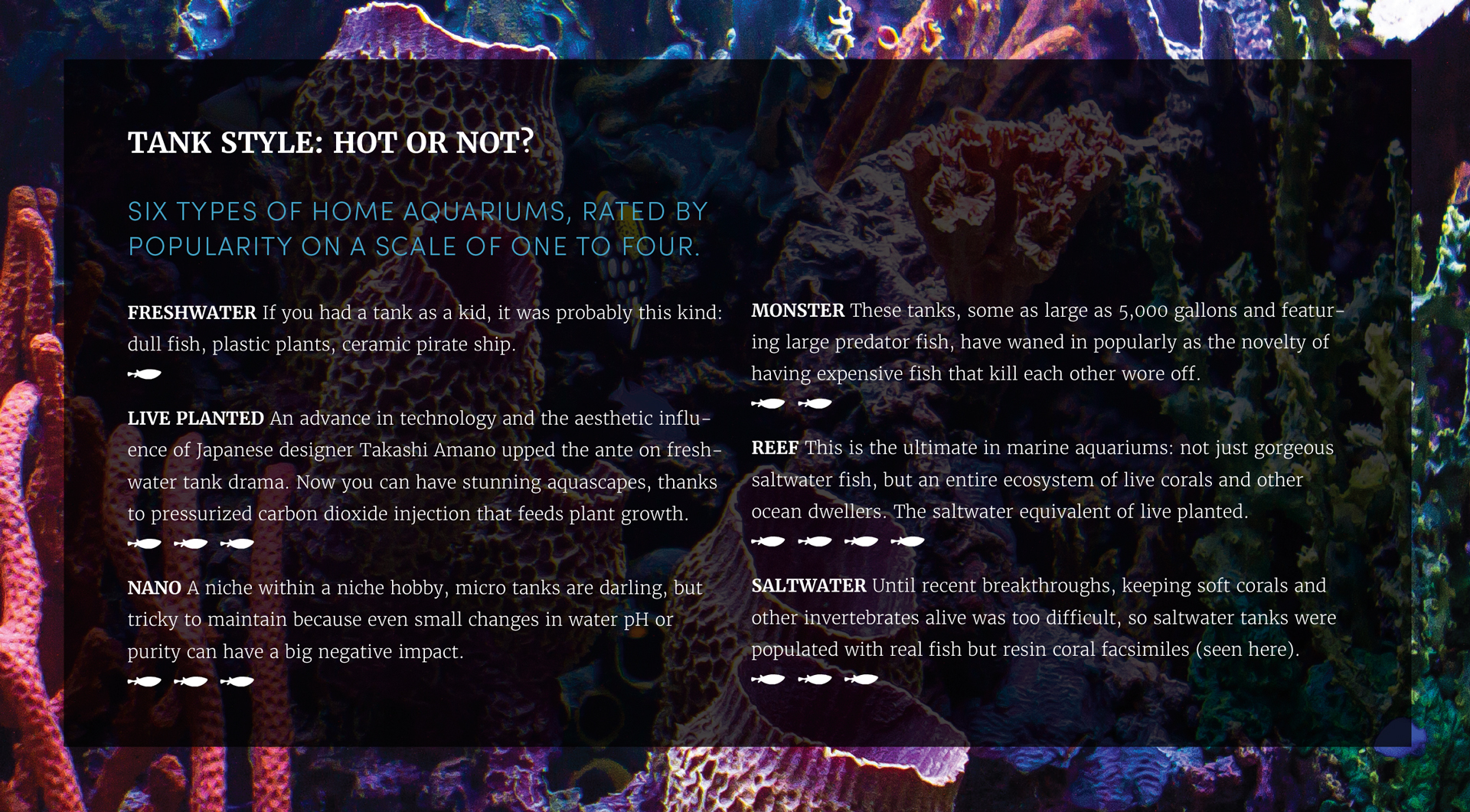
Architect May Sung Comes to The Rescue on a Studio City Reno Gone Wild
In the right hands…finally!
Join the Valley Community






